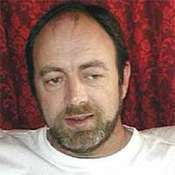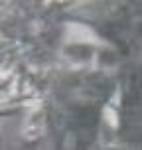Well, the topic kinda explains everything. Is there any way to achieve a good natural metal finish using a paintbrush? And if so what paint do you recommend?
Wanted to build a Swedish Mustang for a while but the metal finish scares me of it...
So I'm thankful for any input you have on the subject, except for pointing out that I should get an airbrush...
Hosted by Jim Starkweather
Natural metal finish with brush?
ThomasB

Joined: May 17, 2002
KitMaker: 762 posts
AeroScale: 141 posts

Posted: Friday, May 03, 2013 - 10:34 PM UTC
Posted: Saturday, May 04, 2013 - 12:42 AM UTC
Hi Thomas as you have already pointed out get an airbrush, however what works for me, but only in the smaller scales 1/72 and 1/144 and small aircraft is a good soft brush, Revell aquacolor aluminium thinned 60/40 with water and applied over a black primer. You need to apply two thin coats not one thick coat, then use the steel and silver paints in the same range to achieve different shades on panels.
The Revell Aquacolor IMO are the best water based acrylic metallic paints but do thin them down as you need.
The Revell Aquacolor IMO are the best water based acrylic metallic paints but do thin them down as you need.
J8kob_F

Joined: October 24, 2012
KitMaker: 202 posts
AeroScale: 92 posts

Posted: Saturday, May 04, 2013 - 08:36 AM UTC
Hi Thomas
If you like brushpainting you could try Humbrol Metalcote. I buy mine at Hobbex and they are just great. There are two types, one you polish after they have dried and they look like polished metal. The other are flat metal finishes but they all look quite convincing.
Jakob
If you like brushpainting you could try Humbrol Metalcote. I buy mine at Hobbex and they are just great. There are two types, one you polish after they have dried and they look like polished metal. The other are flat metal finishes but they all look quite convincing.
Jakob

raypalmer

Joined: March 29, 2010
KitMaker: 1,151 posts
AeroScale: 985 posts

Posted: Saturday, May 04, 2013 - 10:48 AM UTC
The original testors enamel paints (small Jar, white lid) thinned with paint thinner and I think lacquer thinner works too. You can just use basic silver and tone it one way or the other with drops grey or blue or gold.

DaveCox

Joined: January 11, 2003
KitMaker: 4,307 posts
AeroScale: 272 posts

Posted: Saturday, May 04, 2013 - 07:34 PM UTC
I suspect that there's as many answers to this as there are modellers!
Personally I always brush paint any model, and did a natural metal finish on both 1/32 Thunderbolt and 1/24 Mustang.
Undercoat is matt black enamel, then 2 coats of Revell acrylic 'aluminium'. Different panels are then picked out using Tamiya 'flat aluminium' and a silver laquer called 'liqui-plate' that I picked up in a craft shop. More variation can be obtained by mixing white or grey with the aluminium paints.
On the real aircraft, the thicker the metal the darker the colour, and that's what you're trying to represent in miniature.

Personally I always brush paint any model, and did a natural metal finish on both 1/32 Thunderbolt and 1/24 Mustang.
Undercoat is matt black enamel, then 2 coats of Revell acrylic 'aluminium'. Different panels are then picked out using Tamiya 'flat aluminium' and a silver laquer called 'liqui-plate' that I picked up in a craft shop. More variation can be obtained by mixing white or grey with the aluminium paints.
On the real aircraft, the thicker the metal the darker the colour, and that's what you're trying to represent in miniature.
Joel_W

Joined: December 04, 2010
KitMaker: 11,666 posts
AeroScale: 7,410 posts

Posted: Thursday, July 18, 2013 - 03:59 AM UTC
The two most popular paints for a NMF are Allcad 11, and Model Master Metalizers. Both are lacquer based and can only be applied with an airbrush.
For hand painting I would use a enamel based paint vs a acrylic based paint. You're going to have to rub/polish out the finish to smooth out any brush strokes, no matter how thin of a mix you use. Enamels polish out much easier and smoother then acrylic,s as they're a softer paint, and the pigments are smaller.
I would start with a spray/rattle can of Matt not flat black as an undercoat. Then apply you basic metal enamel color thinned out a few light coats at a time. let dry between coats. Build up a nice over all color coat. Let dry for 3-4 days. Now comes the rubbing/polishing out part.
You need a set of polishing cloths or pads:
4,000, 6,000, 8,000, & 12,000. Used wet in a light circular motion. This is how car modelers achieve those super glossy foot deep finishes. You can buy a set that lasts for years from any hobby supply shop that sells model cars.
Now repaint again. Repeat drying and polishing till you get the finish you want. Now add a drop of black (same make of paint) to a cup of paint to get different shade. Mask with Tamiya tape only. seal well, light tack coats. Same deal with polishing.
For other shades, a drop of blue, Metallic, etc. will work just fine.
Be very careful of any high areas, seams, etc. or you'll remove all the paint from them. The paint coat is always thinnest there.
It' takes a long time, but the results are worth it. Airbrushing is much faster and much easier.
Joel
For hand painting I would use a enamel based paint vs a acrylic based paint. You're going to have to rub/polish out the finish to smooth out any brush strokes, no matter how thin of a mix you use. Enamels polish out much easier and smoother then acrylic,s as they're a softer paint, and the pigments are smaller.
I would start with a spray/rattle can of Matt not flat black as an undercoat. Then apply you basic metal enamel color thinned out a few light coats at a time. let dry between coats. Build up a nice over all color coat. Let dry for 3-4 days. Now comes the rubbing/polishing out part.
You need a set of polishing cloths or pads:
4,000, 6,000, 8,000, & 12,000. Used wet in a light circular motion. This is how car modelers achieve those super glossy foot deep finishes. You can buy a set that lasts for years from any hobby supply shop that sells model cars.
Now repaint again. Repeat drying and polishing till you get the finish you want. Now add a drop of black (same make of paint) to a cup of paint to get different shade. Mask with Tamiya tape only. seal well, light tack coats. Same deal with polishing.
For other shades, a drop of blue, Metallic, etc. will work just fine.
Be very careful of any high areas, seams, etc. or you'll remove all the paint from them. The paint coat is always thinnest there.
It' takes a long time, but the results are worth it. Airbrushing is much faster and much easier.
Joel
 |












